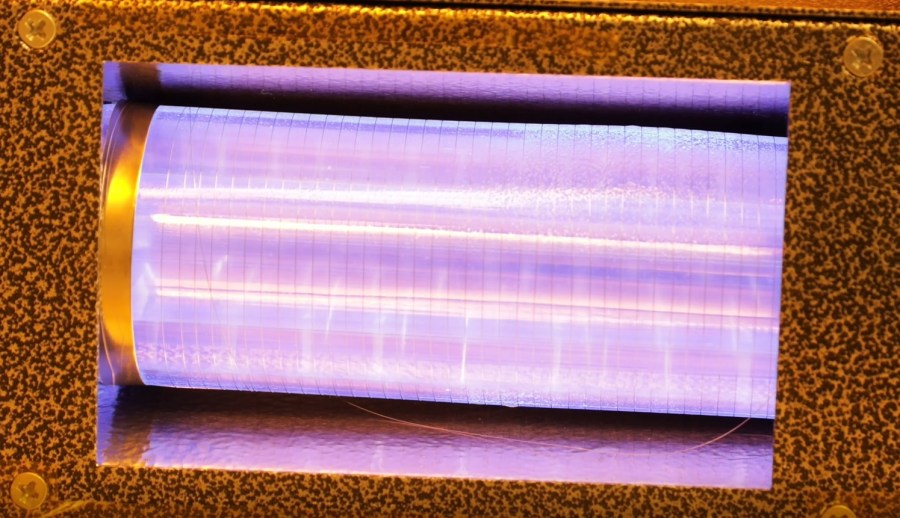SAN FRANCISCO, Calif. (KRON) — A new invention developed by researchers at Columbia University Irving Medical Center could one day be utilized to prevent future viruses like COVID-19 from sweeping across the globe. Their bright idea is light.
Radiation biophysics professor David Brenner said his team discovered that continuous low doses of far-ultraviolet C light can kill airborne flu viruses without harming human tissues. They invented lamps that shine this precise wavelength, and they are seeking FDA approval to place the lamps in public places,
“We have known for more than 100 years that ultraviolet light is really, really efficient at killing microbes. It kills bacteria, it kills viruses,” Brenner said in an interview with KRON4.
Brenner wishes the COVID-19 outbreak could have happened a year later, after the lights could have been deployed inside airports and possibly helped prevent it from spreading into a pandemic.
Public places where many people gather to travel, such as airplanes and train stations, are major hot spots where viruses spread through the air and on surfaces.
“We believe that the current virus, COVID-19, is primarily transmitted through airborne means, the virus is in the air,” Brenner said.
In the first weeks of 2020, Chinese officials in Wuhan, China began disclosing startling numbers of people becoming sick with a “mysterious” illness. They determined it was a new coronavirus, number 19, that was the culprit. Some doctors realized early on that COVID-19 was a highly infectious new virus that had to the potential to spread across the world.
It didn’t take long for the virus to spread beyond China, into Thailand, Japan and South Korea. Government leaders tried to contain it. China placed Wuhan’s 11 million residents under quarantine on January 23, and all flights and trains departing from the city were halted. But 48 hours earlier, the United States had already announced its first confirmed coronavirus case — a man in his 30s who lived near Seattle. He had just returned to the U.S. from a trip to Wuhan. He didn’t start to develop any symptoms until a couple weeks after he had already returned home.
Fast-forward to March 27, and the United States has 85,356 confirmed cases of COVID-19, and 1,246 deaths. The CDC said traveling was linked to half of the infections whose origins could be traced.
Brenner became interested in UVC’s potential years ago, after his friend was infected with a drug-resistant bacteria and died. Tragedy motivated Brenner to declare “my own personal war on superbugs,” he said during at 2017 TED talk.
Before the coronavirus emerged, the researchers were focused on killing another virus that caused a public health crisis not too long ago: H1N1. They tested wavelengths that can’t penetrate the outer layers of the eyes or skin (causing cancer), and thus would not be harmful to humans. They pinpointed an ultraviolet light that eliminated bacteria and viruses alike, while leaving laboratory mice unharmed.
“What we found was a particular wavelength of ultraviolet light that has all the good advantages of germicidal light in killing viruses but it’s safe for human exposure. It can’t reach any live cells in our body,” he said.
When will one of these superbug-fighting lamps appear in public? It will take several months to build the lamps and secure FDA approval, he told KRON4.
“They are being manufactured now,” Brenner said. “We are talking nine months from now before we can make perhaps a million or several million of these devices.”
